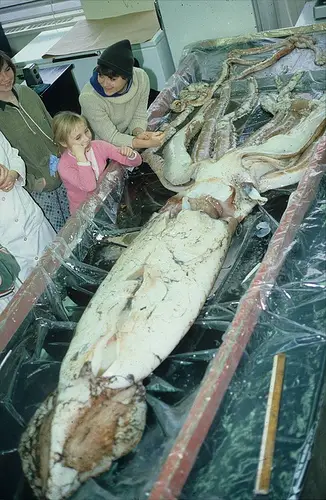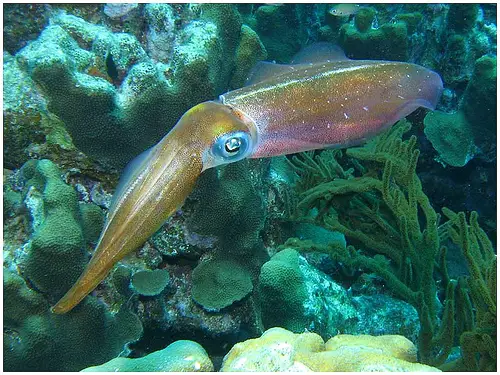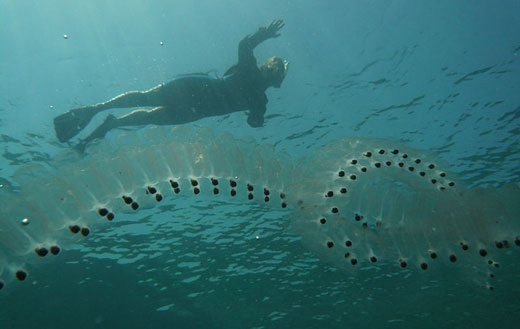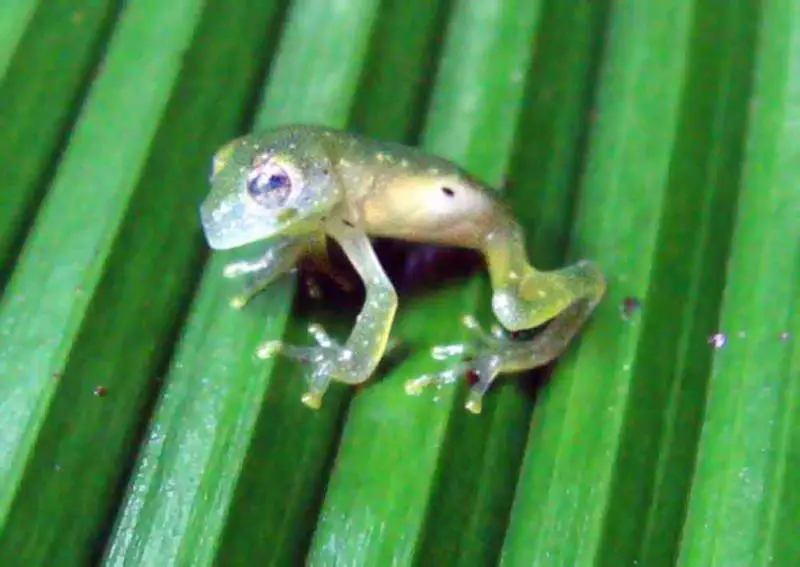Squid
Squid are famous marine cephalods, and there are 300 species in this order. They have a distinctive head, arms, mantle, and bilateral symmetry. They are famous for having 8 tentacles and being strong swimmers.
Their main body mass is enclosed in a mantle, and it has a swimming fin on each side. However, these fins are actually not their primary source of movement. Ther skin can change colours to suit its surroundings as their skin is covered in chromatophores. As their underside is lighter than their topside, this creates camouflage which is handy for both hiding from predators or when they are hunting for prey.
Underneath the body are openings to the mantle’s cavity. This area contains the gills, as well as the openings for reproductive and excretory systems. At the front is a siphon which the squid uses to move via jet propulsion. The siphon works when water is sucked into the mantle cavity, and then expelled out via the system in a fast and strong jet spray of water. The direction of the jet spray can be changed to suit the direction that the squid wants to travel to.
Beyond the mantle cavity and the siphon is the visceral mass. This is covered by a thin layer of membranous epidermis. Under this are all of the squid’s major internal organs.
A squid’s nervous system is called an axon. This giant axon can be up to 1 mm in diameter, and controls part of the siphon or jet propulsion system.
A squid has 3 hearts. They have two brachial hearts which feed the gills, and there is also a larger heart whch pumps blood around the squid’s body. The blood of squids are rich in hemocyanin which is used to transport oxygen. Around the hearts are renal sacs, which are the excretory system. The main heart has 3 chambers, with 2 upper auricles and a lower ventricle.
The head area of a squid is where their 8 arms and 2 tentacles are. Their mouth has a sharp beak which is used to kill its prey and tear them up into pieces. Their eyes are on either side of the head, and have a hard lens. This lens is focused through movement, like a telescope or a camera. Squids have limited hearing, but many are actually intelligent and excellent communicators.

Giant squid recovered in Bonavista North, Newfoundland, Canada sometime in the 1980s. It is being dissected at Memorial University of Newfoundland.
In terms of size, many squids are just only 60 cm long. An average giant squid can reach 13 metres though. In 1978, sharp and curved claws on a squid tentacles’ suction cups cut up the rubber coating o nthe USS Stein’s hull. In 2003, the Collosal Squid was discovered. This species is thought to grow up to 14 metres long, making it the world’s largest invertebrate. In 2007, a fishing vessel from New Zealand managed to catch a Colossal Squid, which measured 10 metres long and weighed 495 kg. This was found off the coast of Antarctica, and is the largest cephalopod that has ever been scientifically documented.
When faced with such massive creatures, it really is no surprise that squids have captured the imagination of both seafaring folklore and in literature as it must have been such a frightening prospect to see one. An example of this is the Kraken, which is a legendary tentacled squid monster which may have been based on sightings of a giant squid.




this site is so owesome, iam a bS biology student